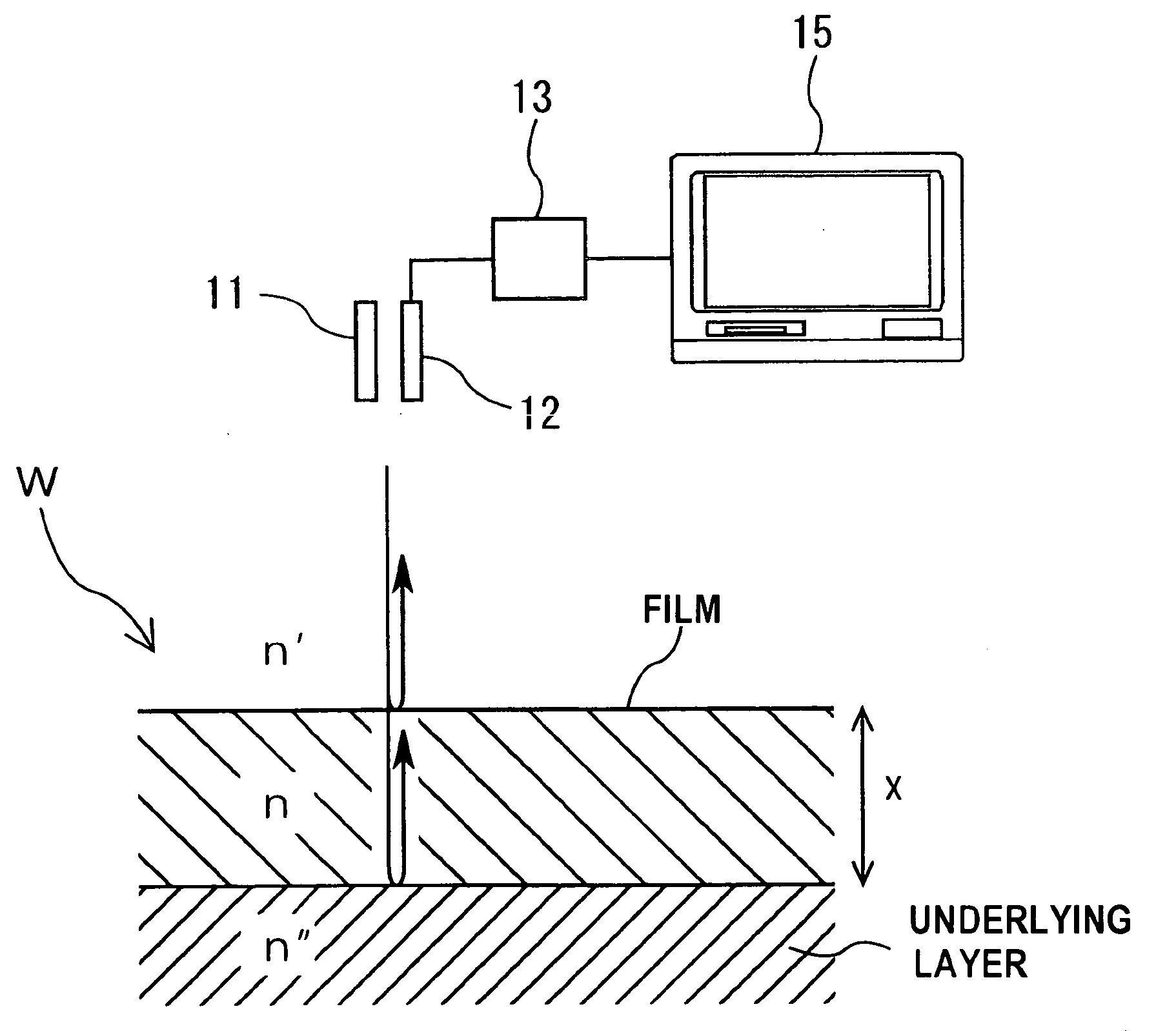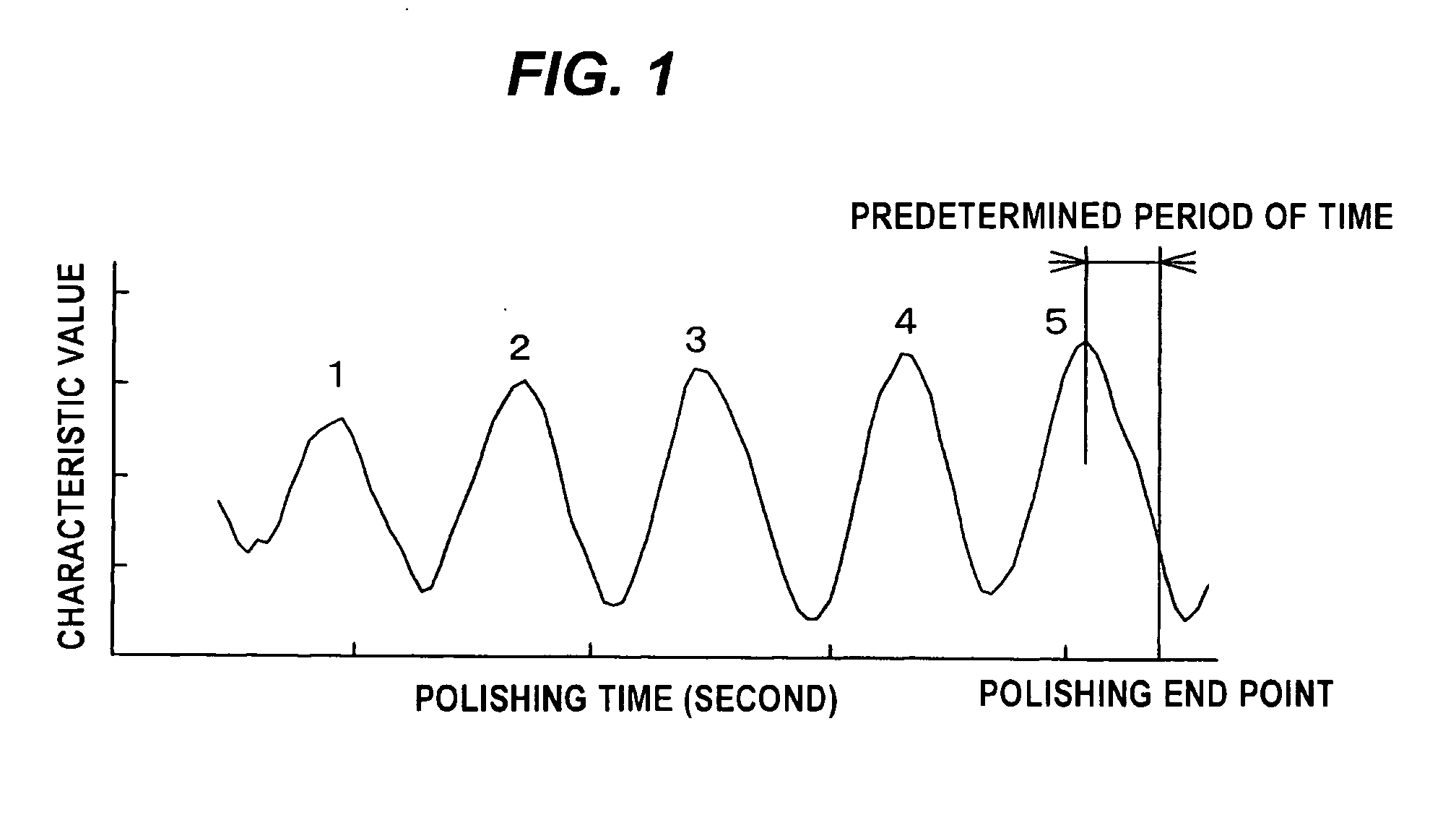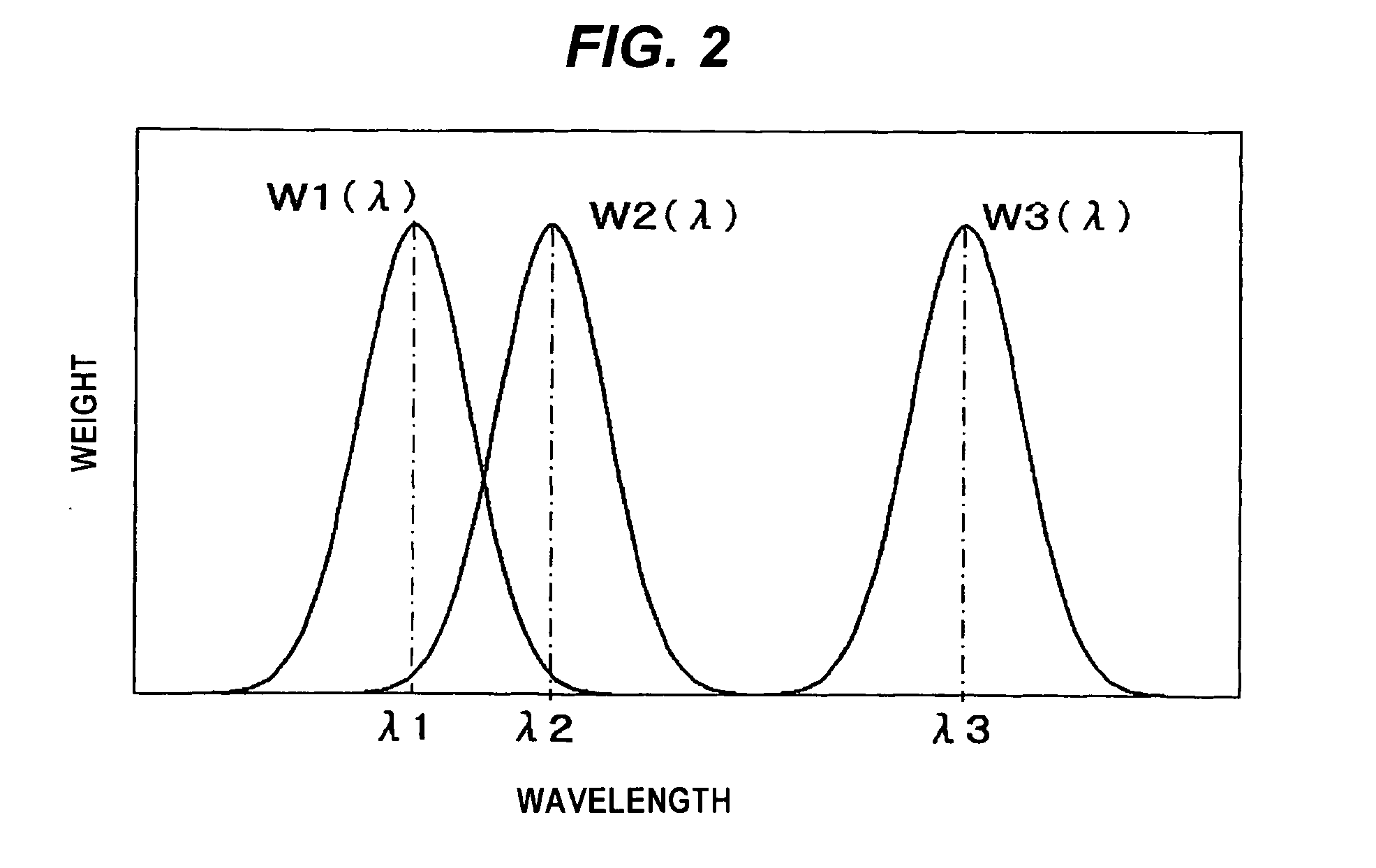Method of making diagram for use in selection of wavelength of light for polishing endpoint detection, method and apparatus for selecting wavelength of light for polishing endpoint detection, polishing endpoint detection method, polishing endpoint detection apparatus, and polishing monitoring method
a technology of endpoint detection and diagram, which is applied in the direction of grinding machine components, manufacturing tools, lapping machines, etc., can solve the problems of difficult monitoring of the progress of the polishing process, interference of light waves from these interfaces, and photocorrosion, so as to achieve the effect of effectively selecting optimal wavelengths and optimal wavelengths of ligh
- Summary
- Abstract
- Description
- Claims
- Application Information
AI Technical Summary
Benefits of technology
Problems solved by technology
Method used
Image
Examples
Embodiment Construction
[0136]Embodiments of the present invention will be described below with reference to the drawings. FIG. 8 is a schematic view showing the principle of a polishing progress monitoring method according to an embodiment of the present invention. As shown in FIG. 8, a substrate W to be polished has a lower layer (e.g., a silicon layer) and a film (e.g., an insulating film, such as SiO2, having a light-transmittable characteristic) formed on the underlying lower layer. A light-applying unit 11 and a light-receiving unit 12 are arranged so as to face a surface of the substrate W. The light-applying unit 11 is configured to apply light in a direction substantially perpendicular to the surface of the substrate W, and the light-receiving unit 12 is configured to receive the reflected light from the substrate W. A spectroscope 13 is coupled to the light-receiving unit 12. This spectroscope 13 measures intensity of the reflected light, received by the light-receiving unit 12, at each wavelengt...
PUM
| Property | Measurement | Unit |
|---|---|---|
| wavelengths | aaaaa | aaaaa |
| relative reflectances | aaaaa | aaaaa |
| wavelength | aaaaa | aaaaa |
Abstract
Description
Claims
Application Information
 Login to View More
Login to View More - R&D
- Intellectual Property
- Life Sciences
- Materials
- Tech Scout
- Unparalleled Data Quality
- Higher Quality Content
- 60% Fewer Hallucinations
Browse by: Latest US Patents, China's latest patents, Technical Efficacy Thesaurus, Application Domain, Technology Topic, Popular Technical Reports.
© 2025 PatSnap. All rights reserved.Legal|Privacy policy|Modern Slavery Act Transparency Statement|Sitemap|About US| Contact US: help@patsnap.com



